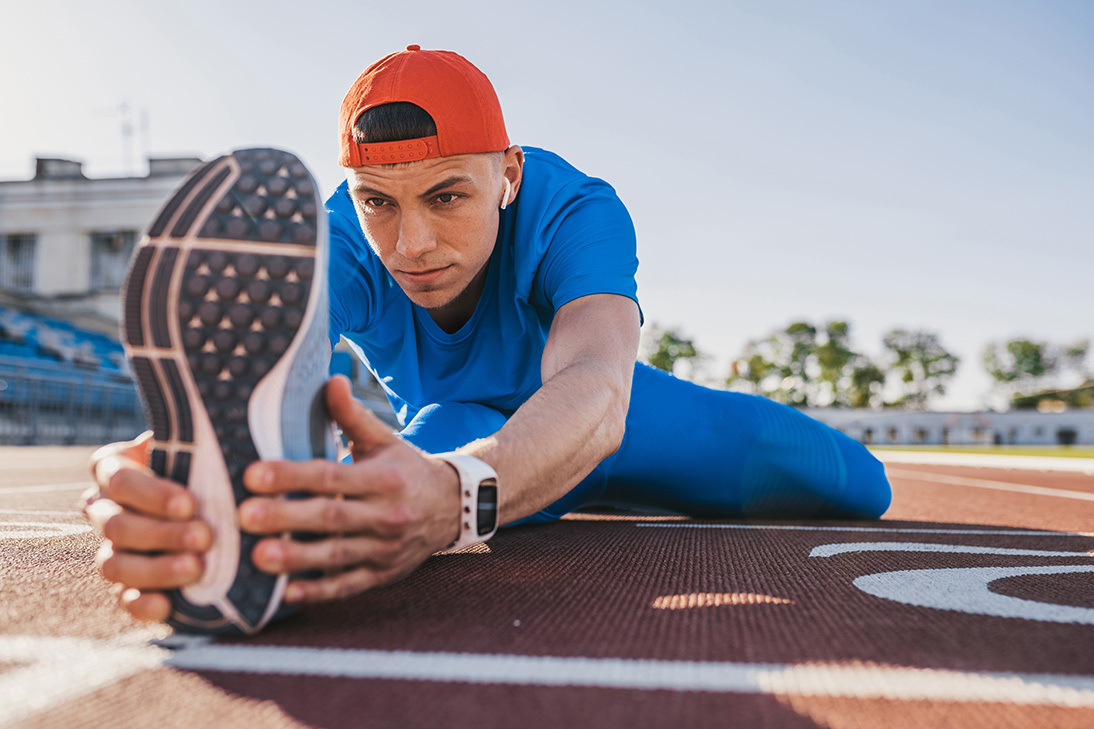For everyone who finishes a big triathlon, marathon, or 100-mile bike ride, completing it is a momentous occasion. If you gave it your all, you’ll probably want to lie down (and maybe cry). Don’t. There’s a proven strategy for recovering from a strenuous endurance event, and it starts as soon as you cross that line. Do it right, and you’ll feel fresher faster. Plus, you should be able to maintain your level of fitness. Consider it the last 5% of your training program, the critical step that locks in those gains made over the previous months of workouts, sweat, and soreness.
The First Week After Your Race
Hydrate
You need to replace all the fluids and electrolytes you lost during your event within the first several hours of your finish. Keep sipping fluids and eating fruits and vegetables (with their high water content) until your urine is clear. Then, continue hydrating with intent for the next three days. Three days is how long muscle recovery can take.
Eat Right
This week isn’t the time to gorge on all the foods (and alcohol) you avoided during your training. Your body needs you to keep up your training diet so it has the essential fuel to repair muscle strain, replenish vitamins and minerals, and get back to normal. Plenty of lean proteins are a must during this period, and healthy fats (olive oil, avocado, seeds and nuts, salmon and oily fish) are welcome, too, as they pack a lot of calories per serving.
Sleep
Sleep, especially the night after your race, will likely prove difficult. The tingling from your inflamed joints and muscle soreness will make deep, restorative sleep a dream. But, try anyway. Give yourself at least an hour to prepare for sleep this week. Turn off the TV and put your phone away. Do some light stretches and then focus on your breathing. Take deep breaths in and out, and be conscious of each breath you take. This should relax your muscles — and brain — and better prepare you to fall asleep. Last, schedule a good 7-9 hours of sleep each night. You know how much sleep you need to wake up rested. Listen to your body and get it.
Stay Active
Active recovery starts right after the finish line. Keep moving for 30 minutes to calm your body after the physical effort and the adrenaline rush of finishing. Walking is all you need to do. The one exception is if you’re dealing with a musculoskeletal injury that makes moving painful. If you’re injury-free, keep moving via light activity over the week. Walk the dog, take a light hike, go for easy swims or bike rides. This isn’t a workout, though. Keep the intensity to a pace that lets you breathe through your nose. The idea is to lubricate your joints and get your heart pumping blood through your muscles to accelerate their recovery.
How light is “lightly active”? When ultrarunner and author Dean Karnazes ran 50 marathons in 50 U.S. states in 50 days throughout the fall of 2006, his active recovery involved standing in his RV for an hour or so as it traveled to the next state. Using his legs to stabilize his body in a moving vehicle provided enough no-impact muscle stimulation to boost his recovery and help him sleep that night.
Skip the Big Projects
Just because you’re no longer training 10-15 hours a week doesn’t mean you can now paint your kitchen, redo your yard, or build that deck off the back door. Your body and mind aren’t ready to tackle these projects. Save them for the week after, at least.
What Now?
After your first recovery week, it’s the perfect time to reflect — and look forward. If you’ve had a great race or event, it’s natural to start thinking about your next one. After all, you accomplished something epic, and the endorphins and fatigued delirium feel amazing. It’s these moments where a human coach or even Humango’s AI-powered coach, Hugo, can be the voice of reason, encouraging your continued progression as an athlete but doing so on a realistic timeline unique to your goals, timeline, and fitness.
The post-race lull in training can be a psychological and physical minefield, where an athlete could do too little or too much and sabotage their growth in both cases. Do too little, and you risk losing all that hard-won fitness, strength, and stamina. You’ll start training for your next goal several steps behind where you could be. Doing too much, too fast before your body is ready for it could send you into burnout, or worse, an overuse injury. A coach, referencing your training data, even your sleep data, will slowly guide you back into form over a few weeks (or months, if desired), prescribing a program that maintains your newfound stamina and strength during this period between training seasons and then builds on it once you’re ready to go.








